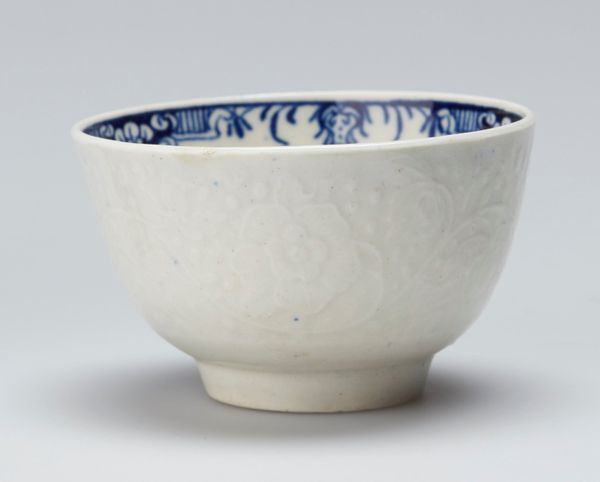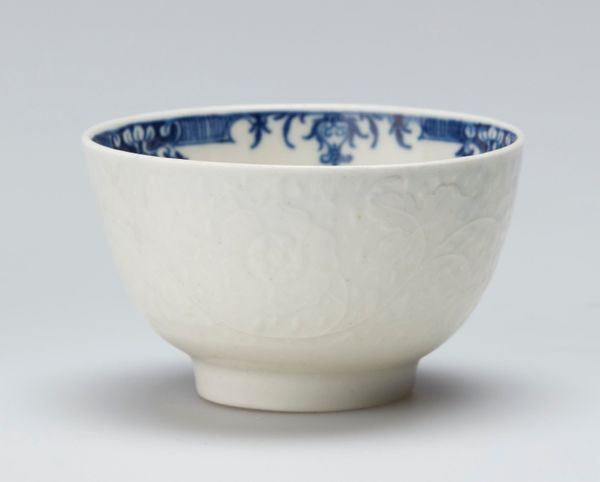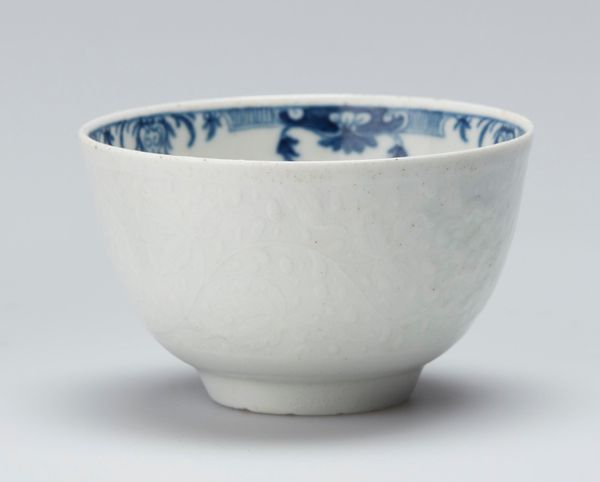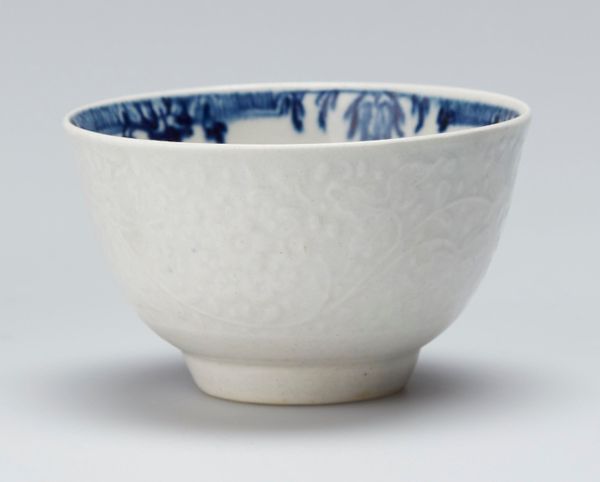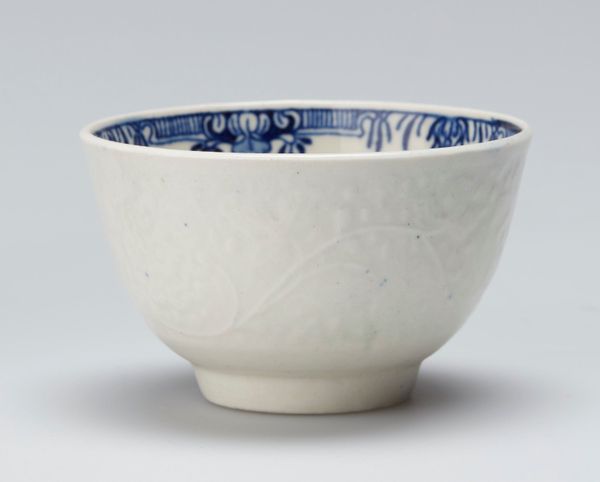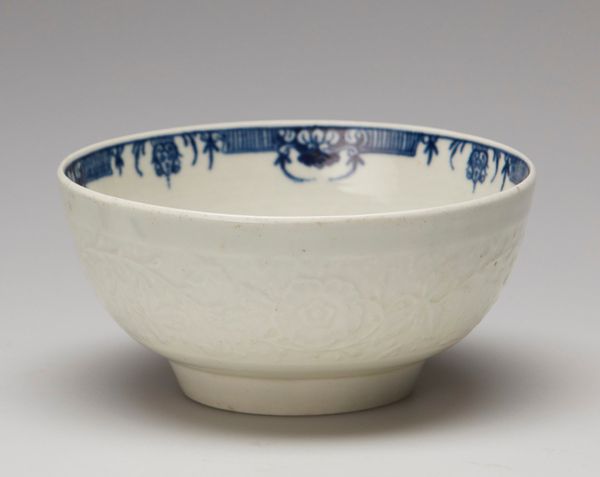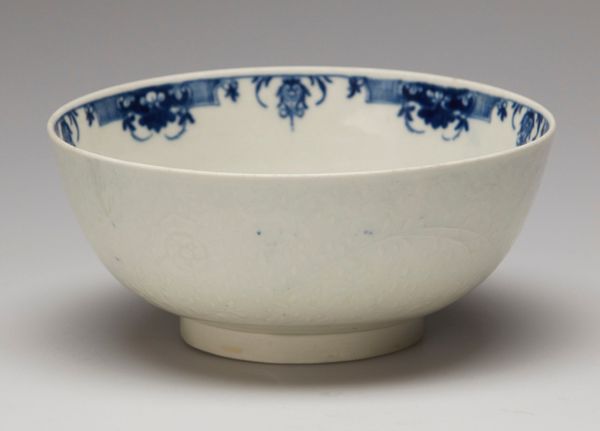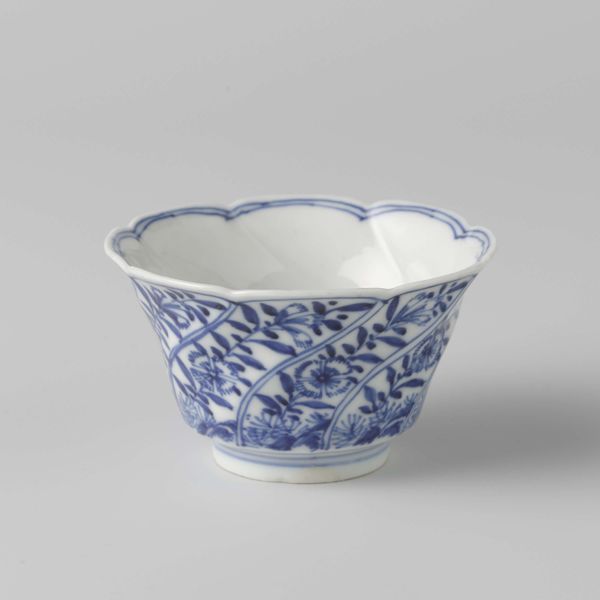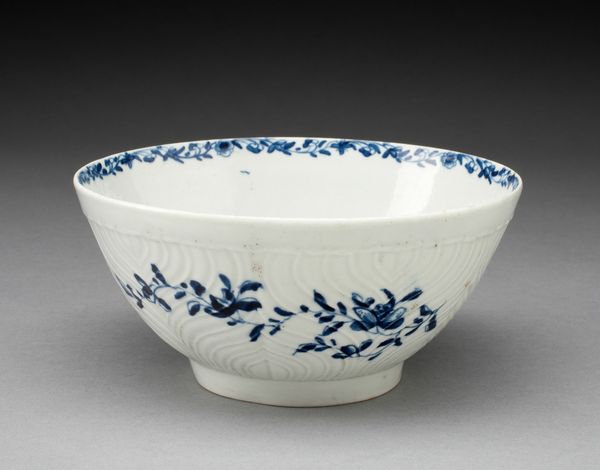
Tea cup c. 18th century
0:00
0:00
ceramic, porcelain
#
ceramic
#
porcelain
#
ceramic
#
decorative-art
Copyright: Public Domain
Editor: We are looking at a delicate teacup crafted by the Worcester Porcelain Works around the 18th century. It's ceramic porcelain with a blue floral design, and it seems very fragile. What can you tell me about its cultural significance? Curator: This unassuming teacup opens a window onto a complex network of global trade, colonial power dynamics, and class structures. Porcelain production in the 18th century was not simply about making beautiful objects. Consider, for example, the English obsession with mimicking Chinese porcelain. Editor: Why was England so interested in mimicking Chinese Porcelain? Curator: This obsession reveals an anxiety of influence, coupled with a desire to emulate the refinement and status associated with Eastern culture, whilst simultaneously dominating it through production and trade. Owning porcelain became a signifier of wealth and taste for the rising merchant class, which challenges traditional power structures rooted in aristocracy and land ownership. This piece invites us to consider the intertwined relationships of race, gender, and colonialism. Editor: I had not considered that, thank you. Do the florals used have special significance? Curator: The specific floral patterns adopted were far from innocent. These often romanticized and aestheticized the cultures from which the porcelain was originally sourced, flattening nuanced social and political landscapes into palatable commodities. It invites a closer inspection of whose narratives were privileged and erased during this period. Editor: This has reshaped how I view decorative arts in a global context. Curator: Indeed, analyzing historical pieces, however "decorative," allows us to critically assess power dynamics in consumption and production across social and political structures. It all intertwines and speaks to broader societal and historical trends.
Comments
No comments
Be the first to comment and join the conversation on the ultimate creative platform.

